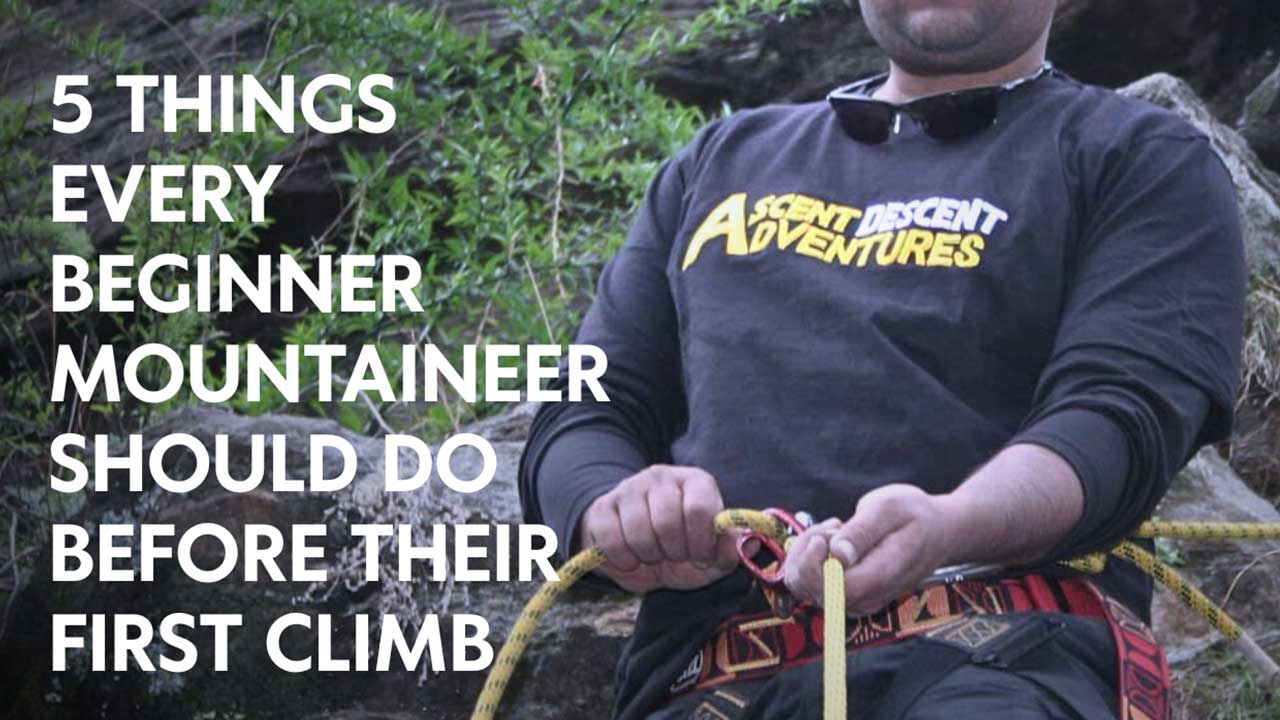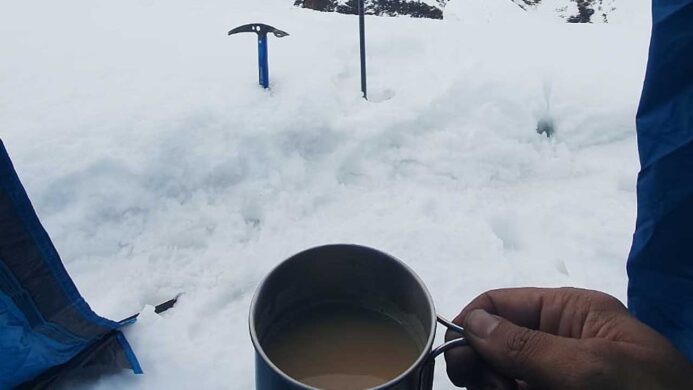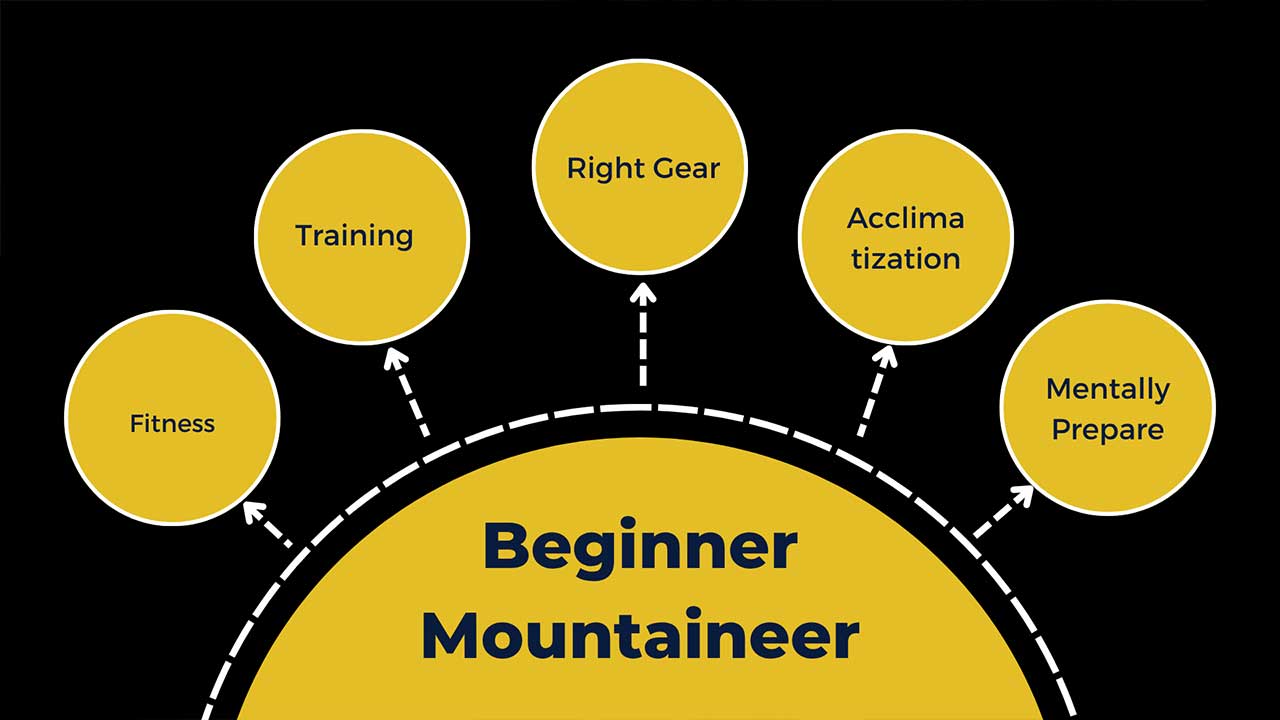5 Things Every Beginner Mountaineer Should Do Before Their First Climb
Blogs
Mountaineering is one of the most rewarding and life-changing experiences you can pursue. But stepping into the world of high-altitude climbing requires more than just enthusiasm. Whether you’re preparing for your first Himalayan peak or a beginner-friendly summit, the right preparation can mean the difference between a safe, successful climb — and a dangerous, disappointing one.
Here are 5 crucial things every beginner mountaineer must do before their first ascent:
1. Build a Solid Fitness Foundation
Why it matters:
Mountain environments test your physical and mental stamina. Long ascents, heavy backpacks, and low-oxygen conditions demand strength, endurance, and cardiovascular fitness.
What to do:
- Start cardio training at least 2–3 months in advance: brisk hiking, trail running, cycling, or stair climbing with a loaded backpack.
- Include strength training for legs, back, and core.
- Don’t ignore flexibility and mobility exercises like yoga.
- Practice altitude hiking if possible, or simulate with incline walking and long hikes.
Pro tip: If you’re planning a Himalayan climb, train for at least 6–8 hours of movement a day to mimic expedition conditions.
2. Take a Basic Mountaineering or Adventure Training Course
Why it matters:
Even if you’re joining a guided expedition, having fundamental skills in mountain safety, rope work, or snow techniques gives you confidence and improves team dynamics.
What to do:
- Enroll in a Basic Mountaineering Course (BMC) from a recognized institute like NIM, HMI, or adventure companies like Ascent Descent Adventures.
- Learn snow craft, rock climbing basics, knot tying, crampon use, and self-arrest techniques.
- If short on time, opt for 7 to 10-day alpine skills or glacier travel workshops.
Pro tip: Look for programs that offer hands-on training in real mountain environments, not just classroom sessions.
3. Invest in the Right Gear (Don’t Overpack or Underprepare)
Why it matters:
Proper gear ensures safety, comfort, and efficiency. Ill-fitting boots, inadequate insulation, or bulky packs can sabotage your first climb.
What to do:
- Buy or rent the essential mountaineering gear: insulated boots, technical backpack, base layers, windproof jackets, headlamp, gloves, and sleeping bag rated for sub-zero temperatures.
- Avoid overpacking — every extra kilogram hurts at high altitudes.
- Test your gear in advance — break in your boots, adjust your pack, and layer up on practice hikes.
Suggested read: Trekking Gear Checklist for the Indian Himalayas

4. Understand High-Altitude Health & AMS Symptoms
Why it matters:
Acute Mountain Sickness (AMS) is a real threat, especially above 3,000 meters. Many beginners ignore early signs or don’t hydrate properly — leading to avoidable evacuations.
What to do:
- Learn to identify symptoms of AMS, HAPE (High Altitude Pulmonary Edema) and HACE (High Altitude Cerebral Edema).
- Follow the golden rule: “Climb high, sleep low.”
- Stay well hydrated and don’t skip meals — food is fuel at high altitudes.
- Carry Diamox or other medication as advised by a doctor experienced in high-altitude medicine.
Pro tip: Take at least 1–2 acclimatization days for every 1,000m gain above 3,000m.
5. Mentally Prepare for the Unknown
Why it matters:
Mountaineering is 80% mental. Harsh weather, exhaustion, fear, or setbacks can derail your motivation. A strong mindset helps you adapt and overcome.
What to do:
- Visualize your climb — imagine tough moments and how you’ll respond.
- Accept that plans may change due to weather, team pace, or health.
- Develop patience and resilience. Mountains teach you to let go of control.
- Practice being comfortable with discomfort: cold, sweat, delays, and physical pain are all part of the journey.
Quote to remember:
“It is not the mountain we conquer, but ourselves.” — Sir Edmund Hillary

Final Thoughts
Your first mountaineering expedition will challenge every fiber of your being — and that’s the beauty of it. By preparing your body, sharpening your skills, packing smart, understanding the risks, and building mental resilience, you set yourself up for a safe and successful climb.
Whether you dream of summiting a Himalayan peak or tackling a snow-covered ridge, these five steps are your essential launchpad.
Ready to Begin Your Journey?
Join our Intro to Mountaineering programs or get personalized coaching from certified instructors at Ascent Descent Adventures. We help beginners become confident mountain explorers with expert-led training and real-world experience in the Indian Himalayas.
Recommended Read for Preparation & Training:
- 5 Training Routines to Prepare You for Your First Himalayan Expedition
- 5 Fitness Benchmarks to Know You’re Ready for Mountaineering
- 5 Skills to Master Before Joining a Mountaineering Course
- 5 Warm-Up Treks to Prepare You for a Major Climb